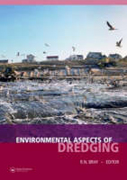
Expanding a port, deepening a navigation channel or creating new land for development, introduces changes to our physical, social, economic and political environment. Changes may result from events during the construction process, orrelate to the nature of the completed structure. Changes can be positive or negative, short-term or long-term, and may affect the immediate vicinity of theproject or a larger geographical area. Predicting and assessing all possible effects of a planned dredging activity in a scientifically-sound and reliable manner is essential, so that appropriate control measures can be taken to avoid or mitigate unwelcome impacts.This book provides guidance for a complete holistic environmental evaluation procedure and for the design and implementationof environmental control measures. The book is of particular interest to engineers, government agencies and port authorities, as well as civil engineering consultants and contractors involved in planning and designing dredging, maritime infrastructure and fluvial projects. INDICE: Introduction: Conscienceness, Concern and Collaboration Players, Processes and Perspectives Control, Coherence and Co-ordination Effects, Ecology and Economy Investigation, Interpretation and Impact Machines, Methods and Mitigation Re-use, Recycle or Relocate Monitoring, Measuring and Modelling Frameworks, Philosophies and the Future Conventions, Codes and Conditions, Marine and Land Disposal.
- ISBN: 978-0-415-45080-5
- Editorial: Taylor and Francis
- Encuadernacion: Cartoné
- Páginas: 386
- Fecha Publicación: 01/02/2008
- Nº Volúmenes: 1
- Idioma: Inglés
